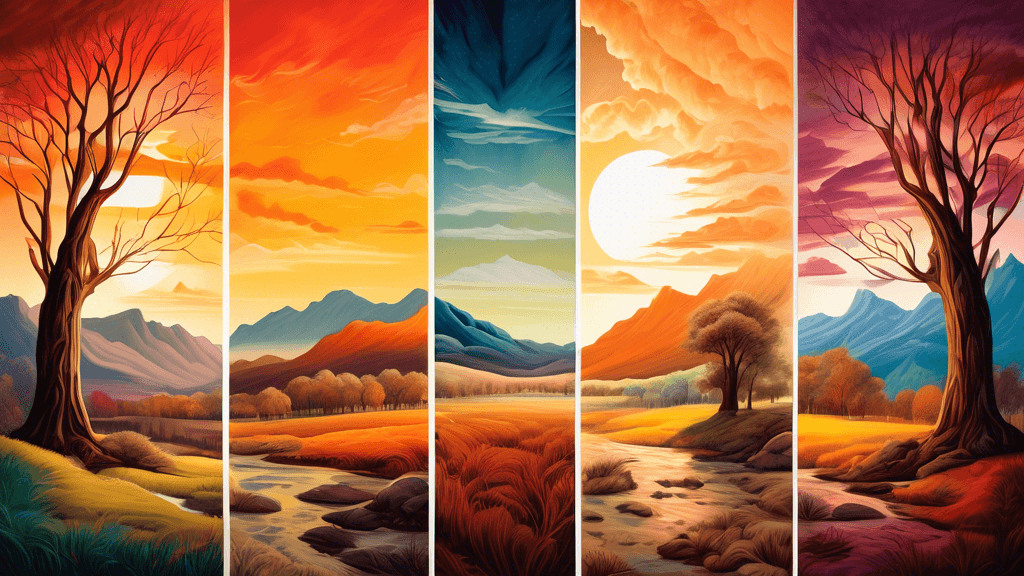
Mastering Contrast: The Key to Stunning Landscape Photography
Share
Understanding the Role of Contrast in Landscape Photography
Contrast in landscape photography is not just about the difference between lights and darks; it’s an artistic tool that can transform the mundane into the magnificent. What makes contrast so crucial in creating compelling images, and how can photographers harness its power to elevate their work?
What is Contrast and Why is it Important?
Contrast refers to the range of difference between the darkest and lightest parts of an image. It's a crucial element because it affects mood, draws attention to specific parts of the scene, and can dramatically alter the narrative of the photograph. Mastering contrast allows photographers to create depth and direct viewers' attention where they want it.
Types of Contrast in Landscape Photography
In landscape photography, contrast can manifest in several forms:
- Tonal Contrast: This is the difference in brightness between different elements of the image, such as a bright sky against a dark mountain.
- Color Contrast: Here, contrasting colors are used to create visual interest and focus. For instance, the reds and yellows of autumn leaves against a blue sky.
- Textural Contrast: Different textures (smooth water vs. rough rocks) can also enhance depth and detail in landscape photography.
Mastering Tonal Contrast
Tonal contrast is particularly important in black and white landscape photography. Ansel Adams, a master of this form, once said, You don’t take a photograph, you make it. He referred to the darkroom techniques he used to manipulate tonal ranges, enhancing the visual appeal of his photographs. In the digital age, similar results can be achieved using software to adjust the highlights, shadows, and mid-tones to balance the image effectively.
Techniques to Enhance Contrast
Enhancing contrast isn’t just about sliding controls in editing software; it begins in the field when composing your shot.
Use of Natural Light
Natural light plays a pivotal role in defining contrast. The time of day significantly affects how light interacts with the landscape. For instance:
- Golden Hour: Provides soft, warm light that creates subtle contrasts.
- Blue Hour: Offers cool, even light, ideal for scenes needing a calm, serene mood.
- Midday Light: Produces harsh lights and dark shadows, creating high contrast ideal for dramatic effects.
The Role of Weather
Weather conditions can also dramatically alter the contrast in a landscape. Overcast days reduce shadows and lower contrast, softening the landscape, while sunny days increase contrast, potentially adding drama to your composition.
Post-Processing for Contrast
Post-processing is a powerful tool for fine-tuning contrast. Techniques such as dodging and burning, where specific areas of the image are lightened or darkened, can help highlight the key elements of the image. HDR (High Dynamic Range) processing can also be helpful in landscapes with extremely high contrast, helping to retain details in both shadows and highlights.
Examples and Applications
Consider the breathtaking landscapes of Iceland with its volcanic terrain and moody skies. These scenes often feature a dynamic range of contrasts, from the dark volcanic rock to the bright, often tumultuous sky. Such environments require a skilled hand at both capturing and editing to ensure the landscape’s raw beauty is accurately conveyed.
Embracing Contrast in Your Landscape Photography
Mastering contrast in landscape photography involves understanding its types, knowing when and how to enhance it, and manipulating light and shadow both in the field and post-process. By focusing on contrast, you can lead the viewer through the landscape, emphasizing elements of interest and creating a memorable, striking image.
Call to Action
Are you ready to elevate your landscape photography to the next level? Start experimenting with contrast in different lighting conditions and watch as your images transform from simple pictures to powerful narratives. Remember, in the world of photography, contrast is not just seen—it is felt. So, grab your camera and start capturing the landscapes in a way that moves your audience.





